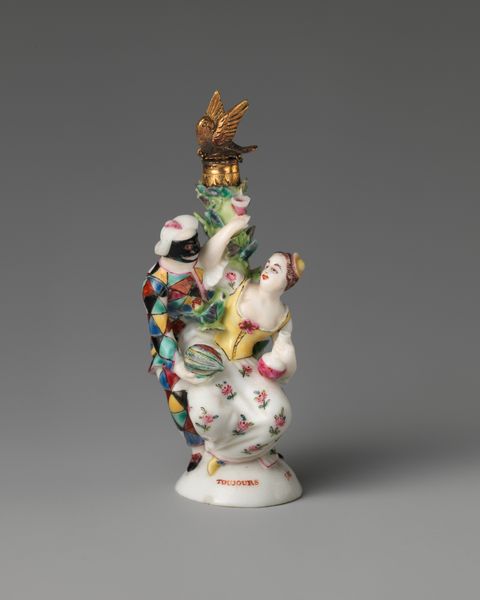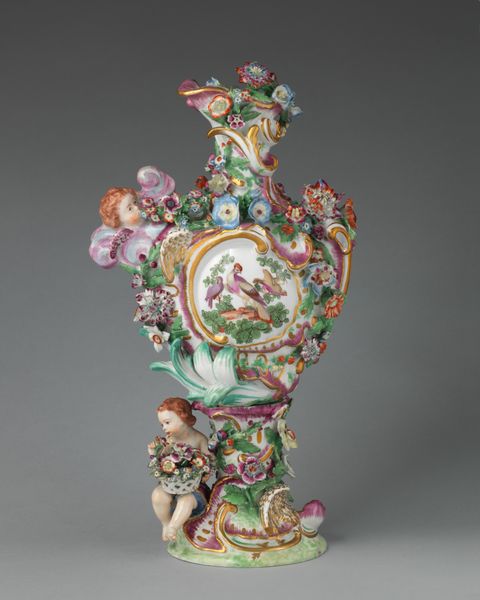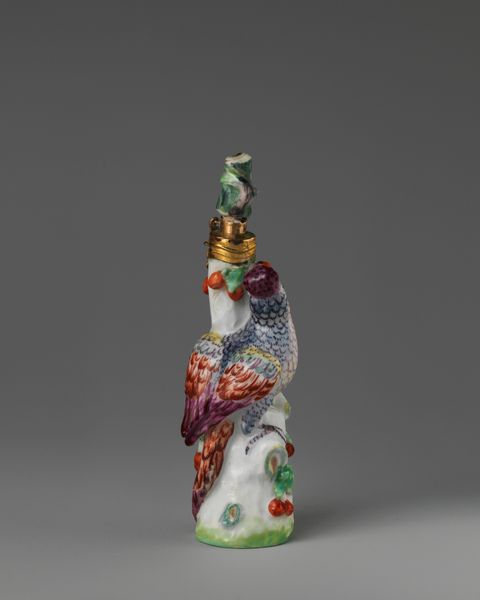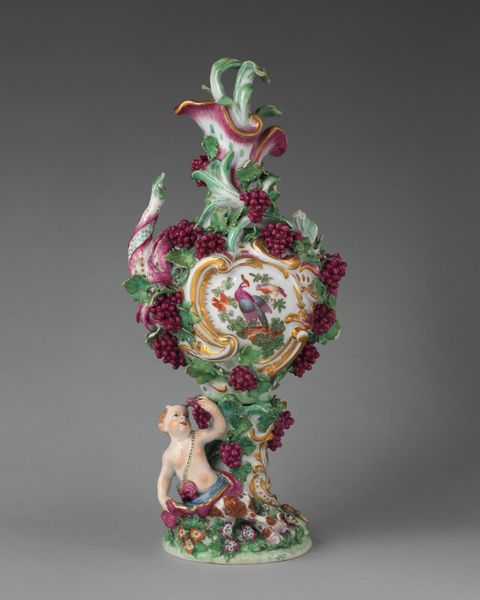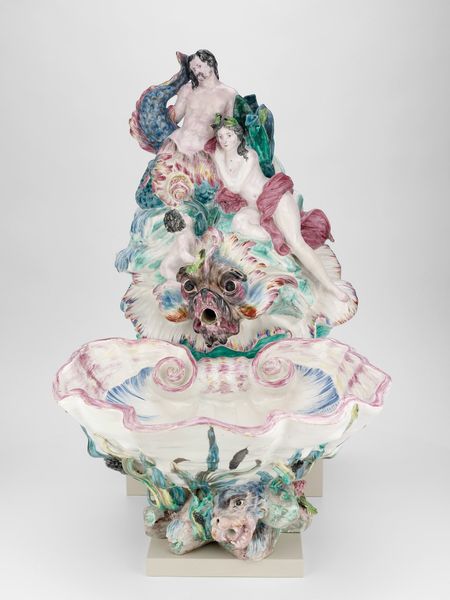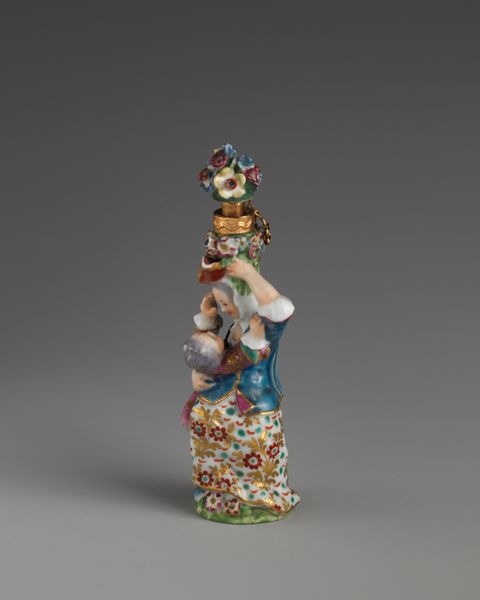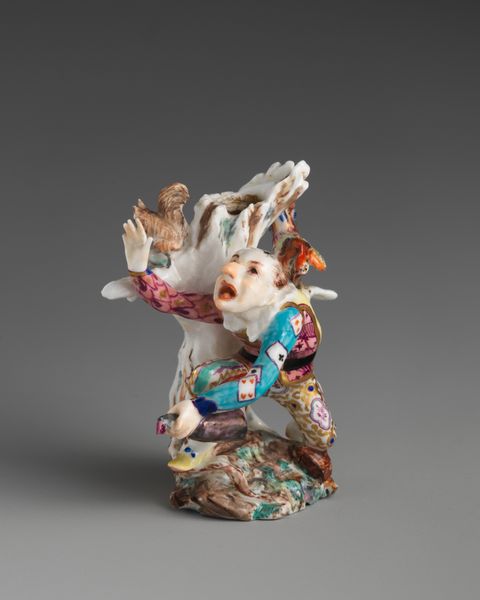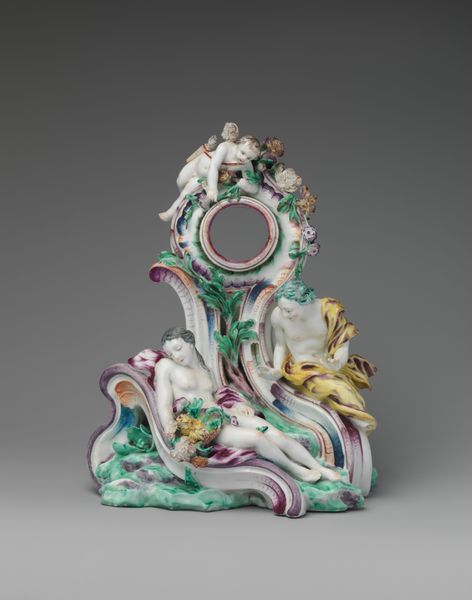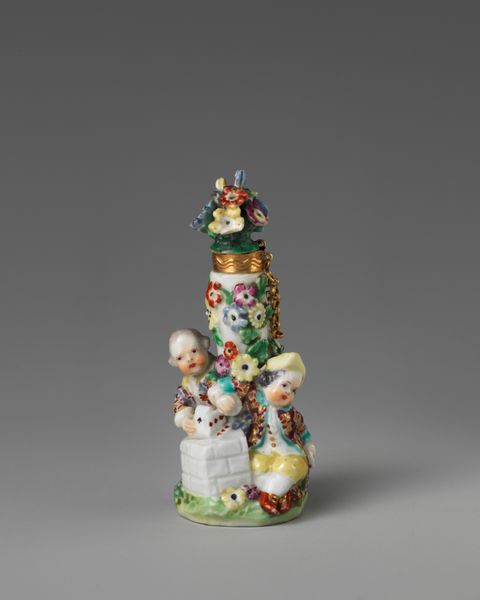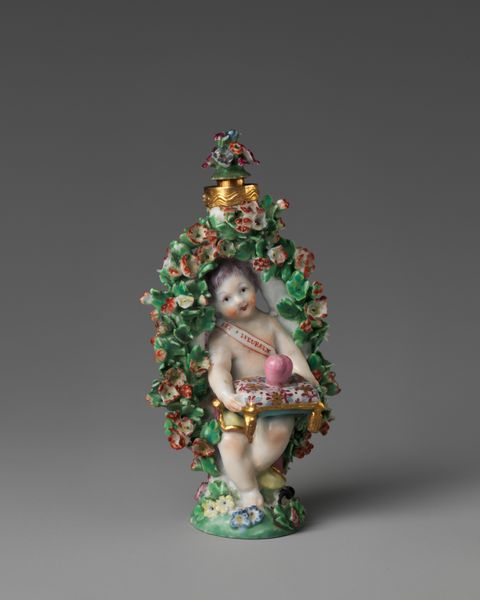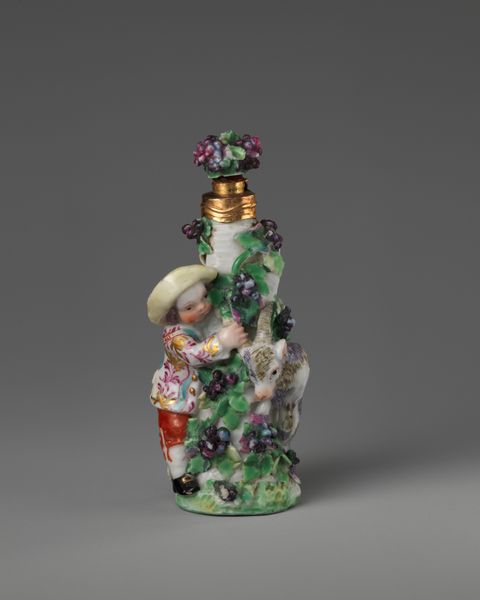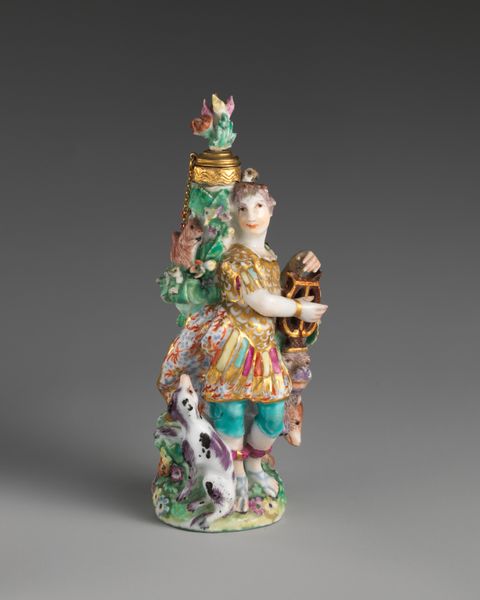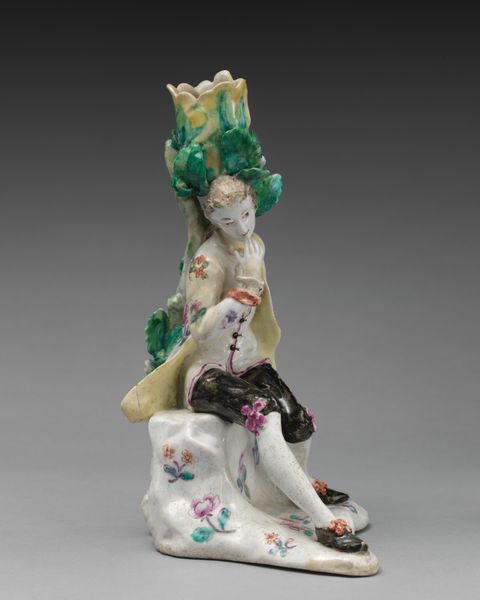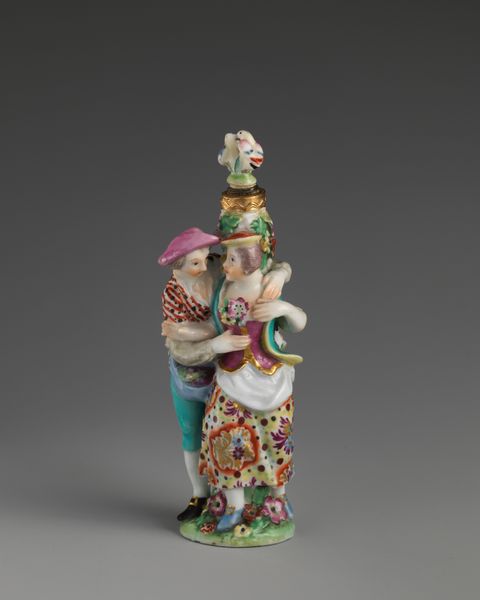
ceramic, porcelain, sculpture
#
ceramic
#
bird
#
flower
#
porcelain
#
sculpture
#
decorative-art
#
rococo
Dimensions: wt. confirmed: 16 7/16 × 19 × 6 15/16 in., 9.5 lb. (41.8 × 48.3 × 17.6 cm, 4.3 kg)
Copyright: Public Domain
Editor: This flamboyant vase with cover, created around 1750-1760 by Longton Hall, is hard to miss. All that porcelain, the bursting flowers and perched birds...it’s certainly decorative! What interests me, I suppose, is, how do we interpret the excess in this kind of piece? Curator: Let’s not dismiss it as ‘merely’ decorative. I’m intrigued by the conspicuous labor that went into crafting this vase. Porcelain production was highly specialized, with different artisans responsible for casting, painting, firing… How does that division of labor, and the resources required to source the materials, reflect the social hierarchies of the time? Editor: So, you are saying, we should be looking at the conditions and the labor of the different people that played a role to produce it, the kind of social interactions behind the creation, not just if it looks nice? Curator: Precisely. Consider the market for these objects. Who was consuming such items? This vase speaks to a very specific kind of consumption; an ostentatious display of wealth. The meticulous rendering of flowers and birds signifies the elite's fascination with nature, filtered through a lens of privilege and ownership. What can porcelain, a human-made material imitating organic form, tell us about this specific culture? Editor: It’s like a trophy…not of military conquest, but of having the economic power to literally *create* nature, control the making of something this precious...a power over labor too. Curator: Exactly! By focusing on the material and its production, we can see how “high art” and craft were intertwined in reflecting the power structures of 18th-century society. Think about the environmental impact, too—the extraction of clay, the firing processes... these pieces carry a heavy, often invisible, ecological footprint. Editor: That completely shifts my understanding. It’s no longer *just* a pretty vase, but a complex object encoding economic, social and environmental relations. Thank you! Curator: My pleasure. And now, perhaps, you can’t unsee those power dynamics simmering beneath the surface.
Comments
No comments
Be the first to comment and join the conversation on the ultimate creative platform.
